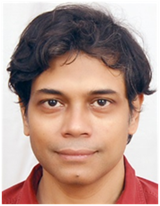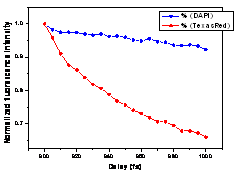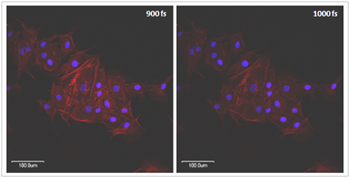










|
Title of Talk Light-Matter Interaction: A Space-Time Control Odyssey for Chemists
Abstract Control: everyone wants it, chemists love it more. They would love to have that imaginary infinitesimal experimental toolthat could selectively pick, tear, join and separate molecular systems at will. With the advent of lasers, physical chemists jumped into the fray to keep the dream alive. However, it was not easy: quantum systems cannot be treated classically. Many decades of manpower and efforts later, it has now become possible to independently address most of the shortcomings and we present some of our newest experimental results in this neo-vision. We take cognizance of the real experimental facts that include at one end the ultrafast decay of quantum correlations while at the other end thermal interferences. We generate appropriate experimental conditions across different phases (gaseous versus condensed) to demonstrate our results. We use several laser parameters for demonstrating control, which include, laser wavelength, pulse-width, phase, polarization, etc. There are various offshoots of such experiments pertaining to control in chemistry, which include new physical insights and novel molecular characteristics, super resolution microscopic imaging capabilities, efficient nanoparticle trapping, thermal-lens spectroscopy for molecules, remote sensing of interfaces as well as photon echo spectroscopy; all of which we have explored. In this talk, I will give a glimpse of this ever evolving and encompassing saga of light-matter interaction.
Figure. One of the representative examples of fall-out of the selective fluorophone suppression with stimulated emission pumping giving rise to better resolution in microscopy. References: 1. Warren S. Warren, Herschel Rabitz, Mohammed Dahleh, Science, 259, 1581 (1999) 2. Debabrata Goswami, Physics Reports, 374, 385 (2003) 3. Tapas Goswami, Dipak Kumar Das, Debabrata Goswami, Chem. Phys. Lett. Frontier Article, 558, 1 (2013) 4. Nirit Dudovich, Dan Oron, Yaron Silberberg, Nature, 418, 512 (2002) 5. Arijit Kumar De, Debjit Roy, Debabrata Goswami, Intl. Rev. Phys. Chem., 30, 275 (2011) |
|
Debabrata Goswami, Professor
Department of Chemistry Indian Institute of Technology Kanpur Kanpur – 208016, INDIA e-mail: dgoswami@iitk.ac.in
Profile. Professor Debabrata Goswami is a physical chemist who pioneered the use of control ideas with femtosecond pulse shaping in microscopy, spatiotemporal control, quantum computing, etc. After receiving his MSc from IIT Kanpur, Dr. Goswami went to US with multiple fellowships to receive his PhD from Princeton and completed his one-year postdoctoral fellowship from Harvard in 1995. After several research jobs in US, he returned to India in 1998 as a Faculty in TIFR (Mumbai). He moved to IIT Kanpur in 2004, where he continues as a Professor in Chemistry, Laser Photonics and Design Program. He is the recipient of several academic and research accolades, including Wellcome Trust International Senior Research Fellowship (UK) and Swarnajayanti Fellowship (India). He is a member of several academic and professional societies and councils. He has published well over hundred research articles, several book chapters, edited conference proceedings and books. He is on the Editorial Board of several Journals and is the Editor-in-chief of the Journal of Spectroscopy and Dynamics. He popularizes Science Education and is a popular K12 teacher on Indian Television. He is a faculty of the Fab-academy, which champions worldwide spread of hands-on Fab-lab education. Overall, Dr. Goswami has always maintained a subtle mix of experiment and theory.
Selected Publications 1. Debabrata Goswami, Physics Reports, 374, 385 (2003) 2. Arijit Kumar De, Debjit Roy, and Debabrata Goswami, Applied Optics, 48, G33 (2009) 3. Arijit Kumar De, Debjit Roy, Debabrata Goswami, Intl. Rev. Phys. Chem., 30, 275 (2011) 4. Indrajit Bhattacharyya, Pardeep Kumar, Debabrata Goswami, J. Phys. Chem. B, 115, 262 (2011) 5. Tapas Goswami, Dipak Kumar Das, Debabrata Goswami, Chem. Phys. Lett. Frontier Article, 558, 1 (2013) |


